- The market sentiment pendulum has flipped. Investors are now largely disregarding Iran's sabre rattling
- Yields and equities are on the rise
- Oil, however has declined, though losses have been pared
Key Events
Investors in Asia today disregarded Iran's repeated threats of reprisals after the U.S. killing of the Middle Eastern country's top general late last week. Regional stocks rebounded strongly and U.S. futures built on yesterday’s bounce during the New York session.
Yields resumed a comeback while the yen declined. Among safe haven assets, only gold trimmed yesterday’s losses. Even crude oil dropped.
Global Financial Affairs
U.S. futures, including for the NASDAQ, S&P 500 and Dow Jones, fluctuated earlier after it was reported Teheran was considering 13 potential retaliatory scenarios.
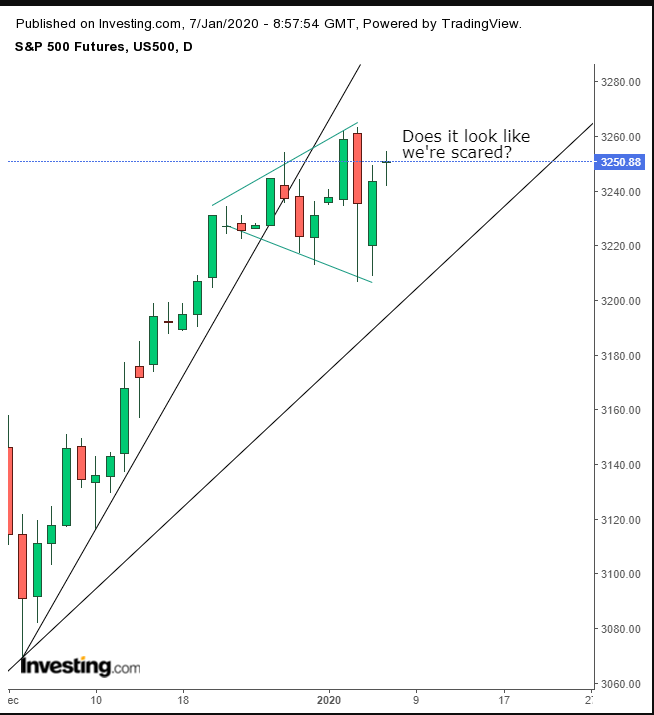
However, futures contracts regained their equilibrium and are now higher. Technically, S&P 500 futures might be forming a bullish pennant.
The STOXX Europe 600 Index gapped up at the open, following yesterday’s Wall Street comeback, as fears of an outright war between the world’s most powerful military and Iran receded.
Asia closed mostly in the green, as investors recognized a buying dip after Monday's knee-jerk selloff. Japan’s Nikkei 225 outperformed, (+1.60%), followed by Australia’s S&P/ASX 200, (+1.35%). Hong Kong’s Hang Seng lagged, (+0.14%). The Taiwan Weighted Index was one of the session's few decliners.
During yesterday’s U.S. session, equities rebounded. The S&P 500 climbed after a three day slump, wiping out losses. Internet giants Amazon.com (NASDAQ:AMZN) (+1.49%) and Alphabet (NASDAQ:GOOGL), (+2.67%), drove both the Technology sector and the broader benchmark index higher. Naturally, the tech-heavy NASDAQ Composite provided the best results among the major indices, (+0.56%).
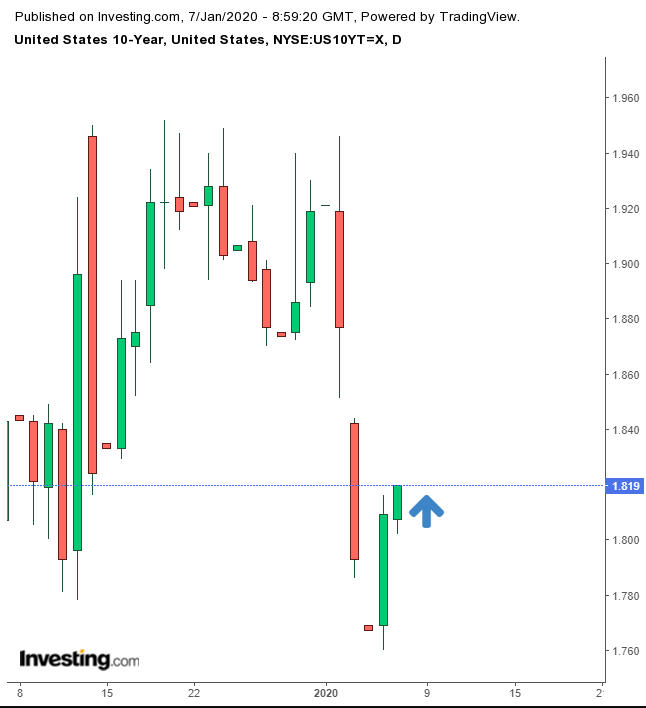
Yields, including for the 10-year Treasury note, are climbing for a second day, as investors rotate out of safe havens and back into risk assets.
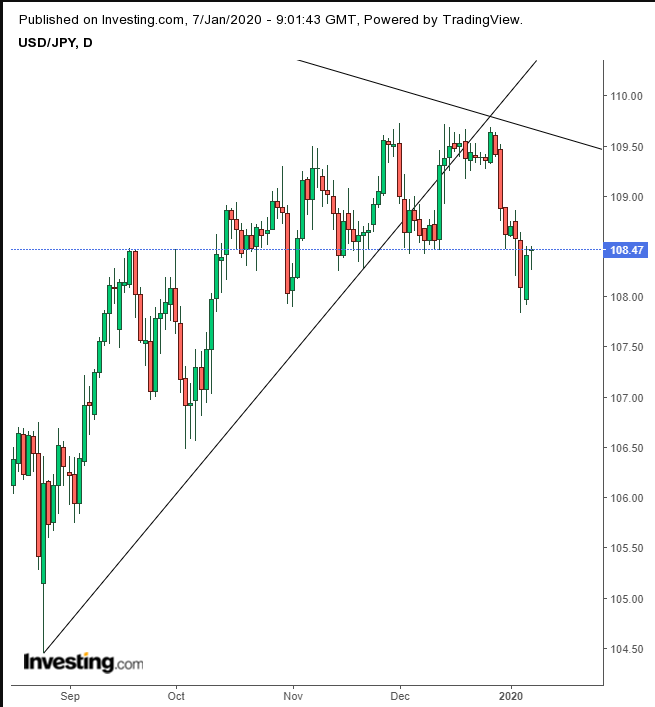
The dollar is strengthening, even against the yen, reflecting the market shift away from headline geopolitical tensions. However, over the longer term, the dollar-yen pair appears to be weakening irrespective of the headwinds, after falling below its uptrend line since August, along with the longer-term downtrend line since October 2018.
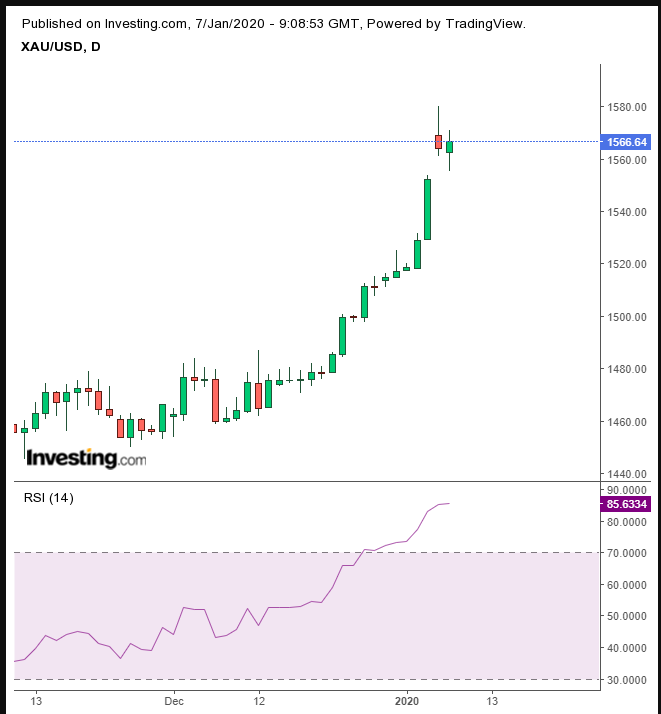
Gold was the sole haven asset to rise, setting the commodity up for it's seventh straight daily advance.
Oil, the most sensitive asset to U.S.-Iran tensions, also slipped, after its two-day surge.
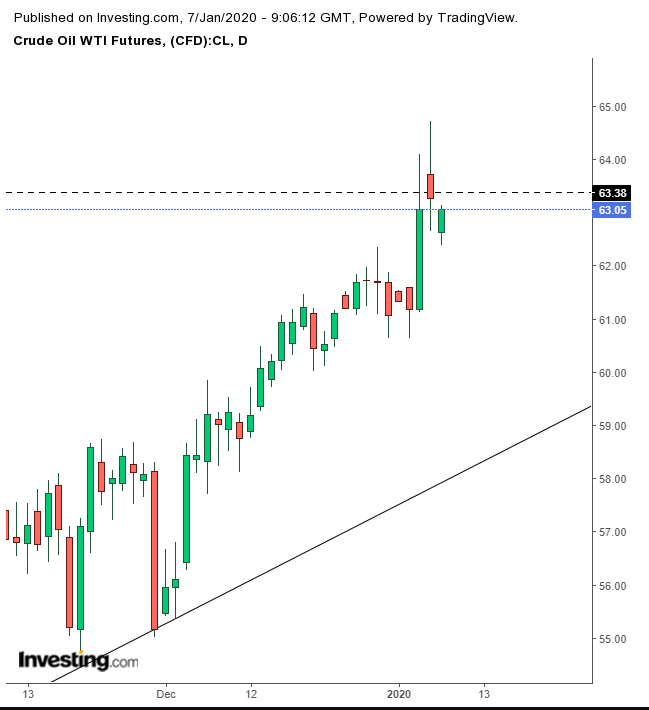
Nevertheless, WTI is well off its daily lows. Investors are clearly continuing to keep their fingers on the buy button, should Iran actually retaliate.
Even if in the long run the value of oil contracts won't change much, in the short run, depending on how events play out, prices can certainly spike in the near-term.
Up Ahead
- U.S. ISM Non-Manufacturing PMI is released on Tuesday.
- Federal Reserve officials Richard Clarida, John Williams, James Bullard and Charles Evans each speak on Thursday.
- The U.S. monthly Nonfarm Payrolls report is due out on Friday.
Market Moves
Stocks
- Futures on the S&P 500 Index increased 0.6%.
- The Stoxx Europe 600 Index gained 0.6%.
- The U.K.’s FTSE 100 Index was little changed.
- The MSCI Asia Pacific Index climbed 0.9%.
Currencies
Bonds
- The yield on 10-year Treasuries climbed one basis point to 1.82%.
- Germany’s 10-year yield rose one basis point to -0.27%.
- Britain’s 10-year yield rose five basis points to 0.821%.
